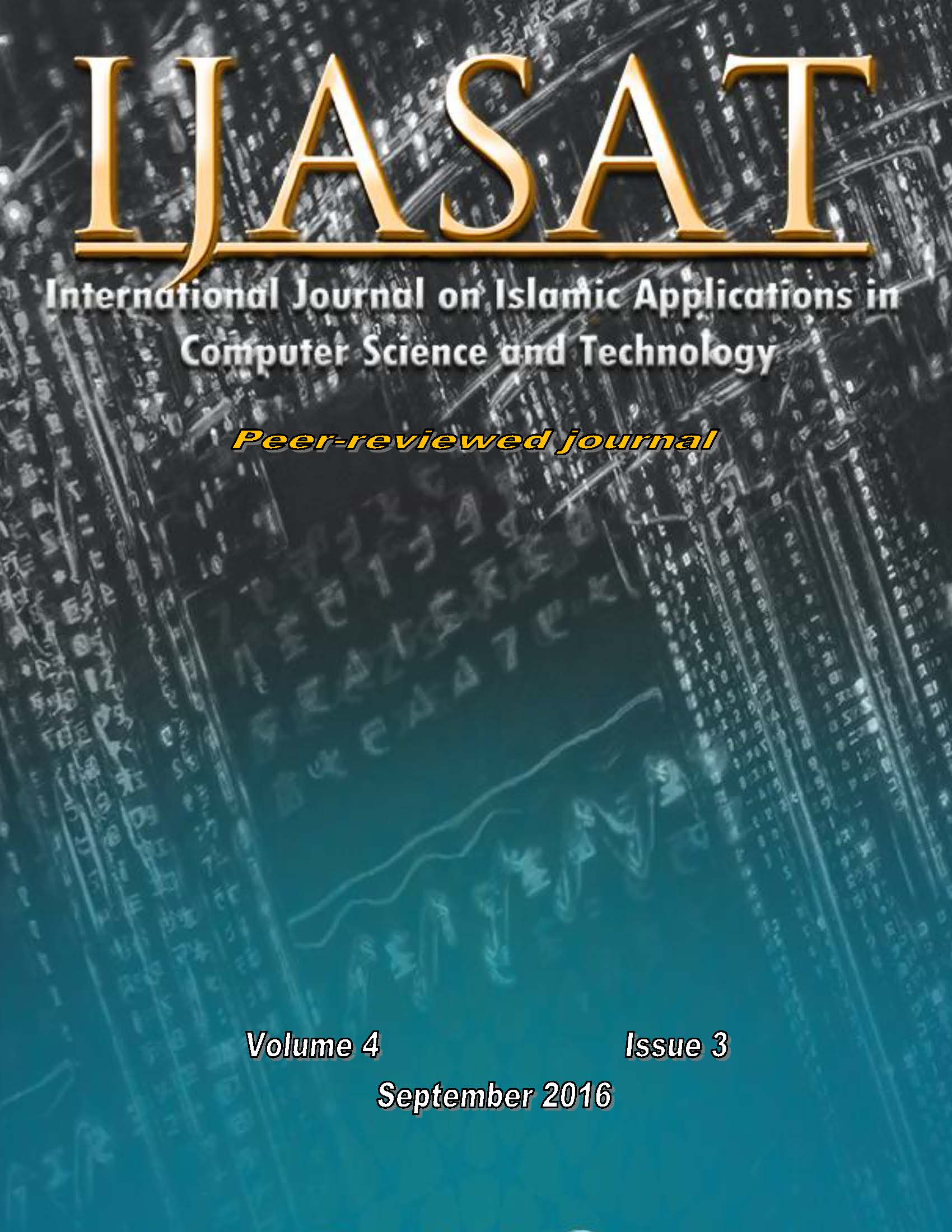Foreword
Abstract
By the grace of Allah, it is a great pleasure to introduce the issue No. 14 which is the third in the fourth volume of: The International Journal on Islamic Applications in Computer Science and Technology
The success and the welcome of this Journal by researchers from many countries, gave us great encouragement for continuing issuing in the due time. This Journal is aimed at publishing original research papers in the field of Islamic Applications in computer science and technology. This field is catching a momentum in the recent years. As a Journal interested in this field, it is the first International Journal of its specific field. As research is growing in this field, we hope that this Journal will be a platform for researchers working in the field to publish their research.
This issue contains six papers, the first one is entitled: Unintentional Information Security Behavior from the Qur’an and Hadith’s Perspective This paper focuses on unintentional employees’ behaviors that have impacts on organizational information security, rather than unintentional behaviors in general IT practices. It explores unintentional information security behavior based on the perspective of the Qur’an and Hadith. Moreover, it provides some recommendations based on academic studies and Sharia teachings to overcome unintentional information security behavior. This paper starts with the discussion on information security behavior, human intentions based on the Sharia, and unintentional behavior under Islamic perspective. Finally, the significance of the study relies on the recommendation to reduce unintentional security threats based on information security studies and Sharia teachings by proposing a model to understand unintentional information security behavior and the factors that affect them.
The second paper is entitled: Keyword based Clustering Technique for Collections of Hadith Chapters This paper investigates the relationships between words in the hadith chapters at the keyword level using a combination technique of text mining and Self Organizing Maps (SOM) cluster analysis to discover frequency of keywords occurred in Hadith chapters and its similarities between different hadith chapters. In this study, we used the hadith documents which were translated into English. The pre-processing steps are necessary in order to eliminate noise and to only keep the useful words. This is an effective and efficient method for Hadith chapters document clustering. The result shows the discovery of the relationships between keywords in the hadith chapters and their relevance. This may give benefit to the Muslims and Islamic scholars to make full use of the Hadith and Sunnah in their daily and also formal practices.
The third paper is of the title: The Parallelized Header Matching Algorithm for Intrusion Detection Systems The main objective of this paper is to enhance the speed of engine detection in real time for packet header in NIDS. We proposed a new parallelized matching algorithm for intrusion detection system called distributed packet header matching algorithm (DPHM). This algorithm can be run on a single processor or multiple-cores platform.
The fourth paper is entitled: Preparation of an Islamic Parallel Bilingual Corpus for Deaf People with 3D Animations. In this paper, the work related to the refinement and enhancement of a previously conducted corpus and its structure; A prototype of a teaching and learning environment is presented that has been improved to reach a good educational support for deaf. This environment is powered by a hybrid (rule-based and statistical approaches) translation component combined with avatar-based 3D animations, which are currently under development.
The fifth paper is entitled: Towards A Minimal Phonetic Set for Quran Recitation This paper addresses a computational linguistic aspect in a phonetically transcribed syllabified Quranic text that is essential for developing speech synthesis prototype. The main objective of this work is to find a set of Quran verses (Ayat) that has the complete set of distinct syllables. An algorithm to find a reduced set for Quran verses that contains all Quran syllables is proposed. One of the motivations for this work is compressing the sound files of the Quran recitation. The current work proposes a technique to extract a reduced phonetic set of Quran recitation that can be used to develop Text-to-Speech system. It is found that out of 211,573 syllables – which Quran consists of – there are 2,642 distinct syllables that represents less than 1.25% of the Quranic syllables set. In addition, a reduced set of Quran verses that contains the whole set of distinct syllables is identified. The extracted set of verses represents around 16% of Quran verses.
The sixth paper is entitled: Scenarios Engineering for Building an Interactive System of Quranic Recitation. In this paper an approach to use scenarios engineering of UML framework for modeling (IS-QR) that can be used to follow the reader to correct his pronunciation and to measure his memorization is presented. A new methodology for building and developing an interactive system containing two activities: use case and scenarios acquisition and scenarios composition is offered. The system proposed can help in better expressing interaction between use cases, sequence diagrams and messages using one kind of diagram for a computing environment for self-learning of the holy Quran. The research project is still at its preliminary stage for the design, architecture and development of a prototype "Interactive System for Automatic Corrector of Quranic Recitation".

